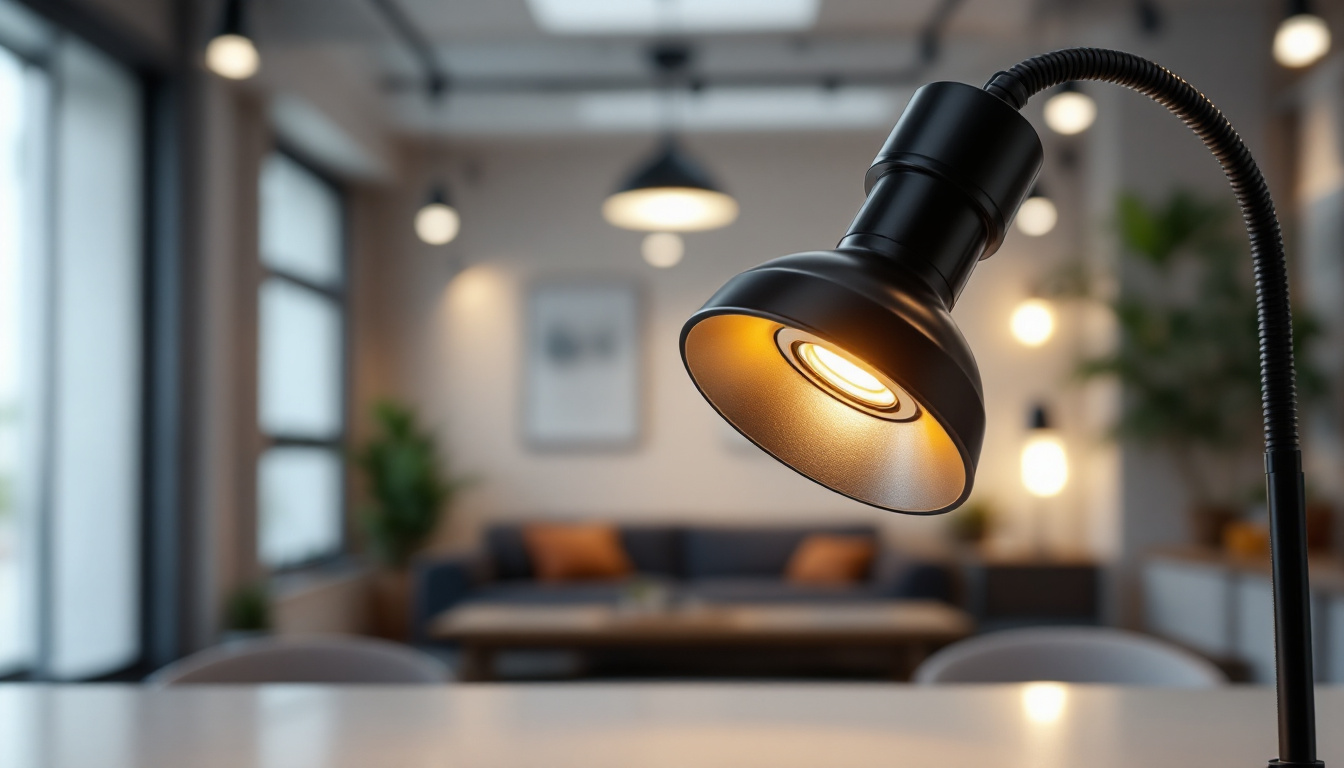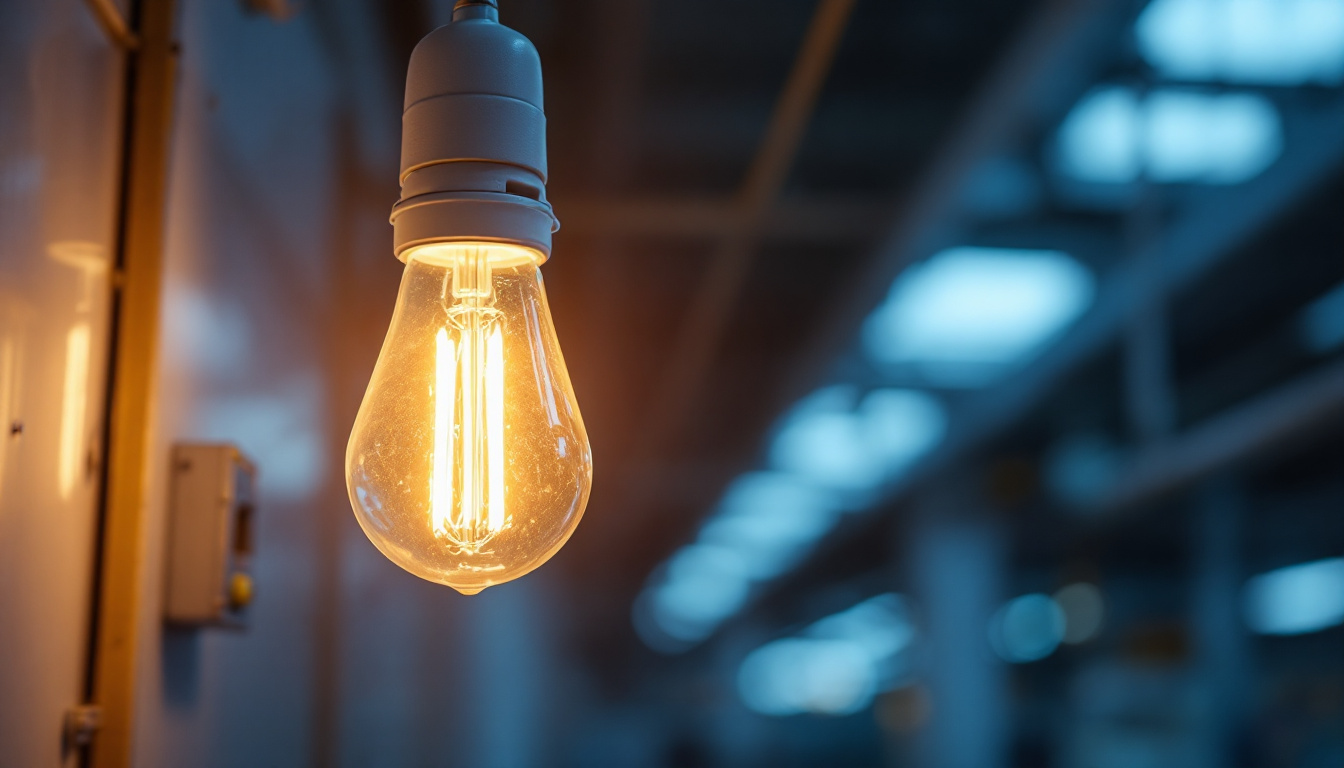
The head receptacle is often overlooked in lighting projects, yet it plays a crucial role in ensuring that fixtures operate efficiently and safely. This article delves into the significance of head receptacles, their various applications, and the common pitfalls contractors face when integrating them into lighting designs.
Head receptacles are electrical components designed to connect lighting fixtures to power sources. They provide a secure and reliable interface for electrical wiring, ensuring that the fixture receives the necessary power to function. Their design varies depending on the type of fixture and the specific requirements of the installation.
A typical head receptacle consists of several key components, including the housing, terminals, and a locking mechanism. The housing protects the internal components from environmental factors, while the terminals facilitate electrical connections. The locking mechanism ensures that the fixture remains securely attached, preventing accidental disconnections.
In addition to these basic components, some head receptacles may include features such as weatherproofing or quick-connect terminals, which can enhance their functionality and ease of installation. Understanding these components is essential for contractors to select the right receptacle for their specific lighting project. For instance, weatherproof receptacles are crucial in outdoor settings where exposure to rain or snow could compromise the electrical connections. Quick-connect terminals, on the other hand, streamline the installation process, allowing for faster setup and maintenance, which is particularly beneficial in large-scale projects where time efficiency is paramount.
Head receptacles come in various types, each designed for specific applications. Common types include standard, twist-lock, and bayonet receptacles. Standard receptacles are widely used in residential and commercial lighting, while twist-lock receptacles provide a more secure connection, making them ideal for outdoor applications.
Bayonet receptacles are often utilized in specialized lighting fixtures, such as those used in theatrical or architectural settings. Each type has its advantages and disadvantages, and selecting the appropriate one can significantly impact the overall performance and safety of the lighting installation. For example, twist-lock receptacles are favored in environments where vibrations or movement are common, as they reduce the risk of the connection loosening over time. Conversely, bayonet receptacles, with their unique locking mechanism, allow for quick changes of bulbs or fixtures, which is particularly advantageous in dynamic settings like theaters where lighting needs may change frequently. Understanding the nuances of each type can empower designers and electricians to create more effective and reliable lighting solutions tailored to their specific needs.
Proper installation of head receptacles is vital for the longevity and reliability of lighting fixtures. An improperly installed receptacle can lead to a host of issues, including flickering lights, electrical shorts, and even fire hazards. Therefore, contractors must adhere to best practices during installation to ensure optimal performance. The repercussions of neglecting proper installation can be severe, not only affecting the functionality of the lighting but also posing significant safety risks to occupants. This makes it imperative for professionals in the field to prioritize meticulous installation procedures.
To achieve a successful installation, contractors should begin by carefully reading the manufacturer’s instructions. This step is often overlooked but is crucial for understanding the specific requirements of the receptacle being used. Additionally, ensuring that all connections are tight and secure is essential to prevent any potential electrical failures. It is also advisable to conduct a thorough inspection of the receptacle and surrounding wiring before installation. This can help identify any pre-existing issues that could complicate the installation process or lead to future problems.
Using the correct tools and equipment is also important. For instance, wire strippers and crimping tools should be used to prepare wires properly, while multimeters can help verify electrical connections. By employing the right tools and techniques, contractors can minimize the risk of installation errors. Furthermore, wearing appropriate personal protective equipment (PPE) during installation can safeguard against electrical shocks and other hazards, ensuring a safer working environment for everyone involved.
Even experienced contractors can make mistakes during the installation of head receptacles. One common error is failing to match the receptacle type with the fixture. Using a standard receptacle for a high-wattage fixture can lead to overheating and potential failure. This mistake not only compromises the fixture’s performance but can also lead to costly repairs and replacements down the line. Understanding the specifications and limitations of each component is essential for achieving a safe and efficient installation.
Another frequent mistake is improper wiring. Incorrectly connecting the wires can result in short circuits or even damage to the fixture. Contractors should always double-check their work and consider consulting with a colleague if they are unsure about any aspect of the installation. Additionally, it is beneficial to stay updated on local electrical codes and regulations, as these can vary widely and may impact installation practices. By remaining informed, contractors can avoid common pitfalls and ensure that their installations meet all necessary safety standards.
Head receptacles are versatile components that can be found in a variety of lighting applications. Understanding how they function in different settings can help contractors make informed decisions during the design and installation phases.
In residential settings, head receptacles are commonly used in ceiling fixtures, wall sconces, and outdoor lighting. They provide a reliable connection for standard light bulbs and LED fixtures, ensuring that homeowners enjoy consistent and efficient lighting throughout their spaces.
Contractors should consider the aesthetic aspects of head receptacles in residential applications. Choosing receptacles that blend seamlessly with the fixture design can enhance the overall appearance of the lighting installation.
In commercial and industrial environments, head receptacles are often subjected to more demanding conditions. They must withstand higher voltages and currents, as well as environmental factors such as humidity and dust. In these settings, using heavy-duty or weatherproof receptacles is essential to ensure safety and reliability.
Furthermore, the layout of commercial spaces often requires more complex lighting designs. Contractors must be adept at integrating head receptacles into these designs, ensuring that they meet both functional and aesthetic requirements.
architectural and theatrical lighting applications often require specialized head receptacles that can accommodate unique fixtures and lighting effects. In these scenarios, contractors must have a deep understanding of the specific requirements of the project, including the need for dimming capabilities and color-changing features.
In addition, the placement of head receptacles in these settings can significantly impact the overall lighting effect. Careful planning and consideration are required to ensure that the receptacles do not interfere with the intended design and functionality of the lighting system.
Choosing the right head receptacle for a lighting project can be challenging. Contractors must navigate various factors, including compatibility, safety standards, and environmental conditions. Understanding these challenges is crucial for making informed decisions.
One of the primary challenges in selecting head receptacles is ensuring compatibility with the fixtures being used. Different fixtures may require specific types of receptacles, and failing to match them can lead to performance issues. Contractors must carefully assess the specifications of both the fixture and the receptacle to ensure a proper fit.
Additionally, some fixtures may have unique electrical requirements, such as specific voltage or wattage ratings. Contractors should always verify these specifications before making a selection to avoid potential issues during installation.
safety is paramount in any lighting project, and head receptacles are no exception. Contractors must ensure that the receptacles they choose comply with local and national safety standards. This includes checking for certifications from recognized organizations, such as Underwriters Laboratories (UL) or the Canadian Standards Association (CSA).
Ignoring safety standards can lead to serious consequences, including electrical fires or equipment failures. Therefore, contractors should prioritize safety when selecting head receptacles and remain informed about any changes in regulations or standards.
The lighting industry is constantly evolving, and head receptacles are no exception. Emerging technologies and design trends are shaping the future of these essential components, offering exciting possibilities for contractors.
As smart lighting systems gain popularity, head receptacles are being designed to accommodate advanced features such as remote control and automation. Contractors will need to stay informed about these developments to ensure that their installations can support smart technologies.
Integrating smart receptacles into lighting designs can enhance the functionality and efficiency of lighting systems, allowing users to customize their lighting experiences. Contractors who embrace these trends will be better positioned to meet the evolving needs of their clients.
With a growing emphasis on sustainability, head receptacles are also being designed with eco-friendly materials and energy-efficient features. Contractors should consider these aspects when selecting receptacles for their projects, as they can contribute to overall energy savings and environmental responsibility.
Choosing sustainable options not only benefits the environment but can also enhance the reputation of contractors as forward-thinking professionals committed to responsible practices.
The head receptacle may be a small component in the grand scheme of lighting projects, but its importance cannot be overstated. Proper selection and installation of head receptacles are critical for ensuring the safety, efficiency, and longevity of lighting fixtures.
Contractors must remain vigilant in their understanding of head receptacles, from their various types and applications to the challenges of selection and installation. By doing so, they can enhance the quality of their lighting projects and ultimately provide better service to their clients.
As the lighting industry continues to evolve, embracing new technologies and sustainability practices will be essential for contractors looking to stay ahead of the curve. The head receptacle may be the missing piece in many lighting projects, but with the right knowledge and approach, it can become a cornerstone of successful lighting design.
Ready to elevate your lighting projects with the right head receptacles and a vast array of spec-grade lighting products? Look no further than LumenWholesale, where we provide contractors with exceptional quality at wholesale prices. Our commitment to cutting out the middleman means you get the best value for your investment, with free shipping on bulk orders to streamline your purchasing process. Don’t let hidden fees dim the success of your lighting designs. Choose LumenWholesale for a seamless blend of quality, affordability, and convenience. Wholesale Lighting at the Best Value is just a click away. Enhance your lighting solutions with us today.

Discover why LED sign lighters are indispensable tools for modern lighting contractors.

Discover essential tips for lighting contractors to enhance outdoor spaces with solar lighting.

Discover the benefits of T-8 bulbs in lighting installations and how they enhance safety and efficiency.

Discover how lighting contractors are transforming spaces with Flood Light LED technology.